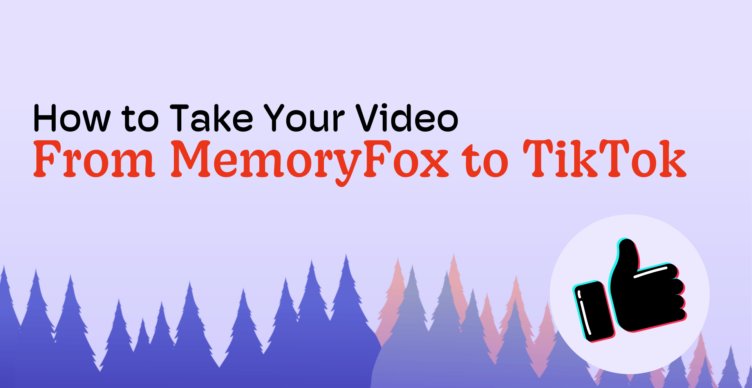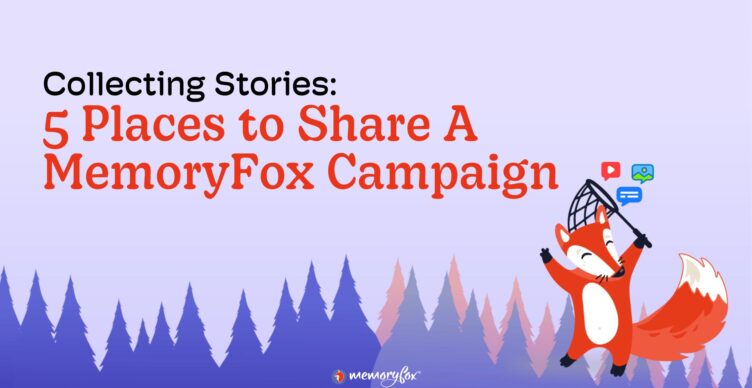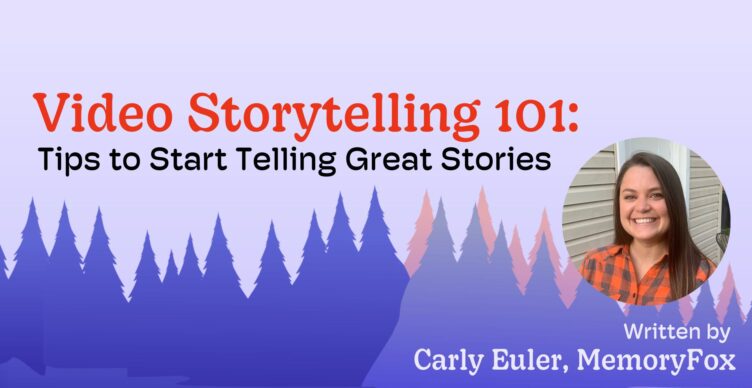Community Building, MemoryFox, Storytelling Strategy
Plot Twist: 5 Reasons to Embrace Nonprofit Storytelling
There is an iconic episode of AMC’s Mad Men when Don Draper gets the opportunity to pitch Kodak on a campaign to market its new slide projector. In his meeting with the Kodak bigwigs, Don uses his own family photographs to showcase the projector as a carousel — one that allows purchasers to move through time and wax nostalgic.
The pitch has a striking emotional effect on the room, forcing some of the characters to dig deep and reflect on relations with their own loved ones. And while yesteryear’s slide projectors have been replaced by devices that can fit in one hand, the tenet of Don’s winning pitch still holds true: a story, told by visuals, pulls at the heartstrings in a big way.
For nonprofits, telling your story — and empowering others to tell it on your behalf — is essential in building and sustaining critical connections with your communities, volunteers, donors, and other key stakeholders. And these days, even more so than in the era of Don Draper, visual content MUST be part of the equation.
on your behalf — is essential in building and sustaining critical connections with your communities, volunteers, donors, and other key stakeholders. And these days, even more so than in the era of Don Draper, visual content MUST be part of the equation.
5 Reasons to Embrace Nonprofit Storytelling
Here are 5 reasons to embrace and integrate visual storytelling into your marketing and fundraising efforts:
1. Storytelling Humanizes the Work You Do
The United States alone is home to approximately 1.5 million nonprofit organizations. People have plenty of options when deciding where to invest their time, money, and resources. From cancer support groups and animal rescues, to education and social justice initiatives, the nonprofit sector encompasses a wide range of causes.
Differentiation is key, and storytelling is the most effective way to do it.
In today’s world, photo and video content has never been more important when it comes to sharing your impact with your target audiences. These visuals are no longer just “nice-to-haves,” they are fundamental. Whether donors are giving $5 or $5 million, they want to know their contributions are making a difference — and as nonprofit leaders, it’s your job to show them!
2. Nonprofit Storytelling Empowers Your Advocates
 When you’re looking for a new spot to eat dinner, it’s one thing to read on a restaurant’s website that they’re the #1 Italian restaurant in the city. It’s another — and much more telling — to read reviews from past patrons.
When you’re looking for a new spot to eat dinner, it’s one thing to read on a restaurant’s website that they’re the #1 Italian restaurant in the city. It’s another — and much more telling — to read reviews from past patrons.
The same is true when it comes to companies selling products and nonprofits championing a cause. People are no longer satisfied taking your word for it; they want to hear it from someone else. Nonprofit leaders are often their organizations’ biggest cheerleaders, but empowering supporters to tell your story is what will truly make a difference.
Nonprofit storytelling puts a spotlight on the people who have been most directly impacted by their efforts: someone whose life has changed through volunteering, a student who was able to continue their education because of scholarship funds, a cancer survivor who hopes to see funding for a cure. These are the impactful stories that leave the biggest mark.
3. Where the Written Word Fails, Photos & Videos Thrive
Have you ever found yourself struggling to find the right words? You’re certainly not alone. Despite our best efforts, there are times when text just doesn’t cut it. In those cases, videos and photos can do the talking for us.
To demonstrate impact, nonprofits can’t just tell, they need to show. Imagine an annual report that’s just pages and pages of text — or a social media post about a fundraising event but that doesn’t include any pictures. The stories you’re sharing would be much more compelling and memorable with visuals to match.
4. Stories Stick with Us
There’s a reason your Uncle Larry has been telling the same story of when he and your dad were teenagers at every holiday gathering for the last 30 years. It’s the same reason the stories you read to your kids are the same ones your parents read to you. Stories stick with us.
While a potential donor may not know your exact mission, they’ll remember the video they saw that told the story of a local family experiencing job loss and food insecurity who found resources at your food pantry.
The facts, figures, and data points that nonprofits invest so much time gathering and reporting certainly have their value, but at the end of the day, these real-life stories of your efforts in action are what resonate and stick with us the most.
5. Great Stories Inspire Action
At the end of the day, the goal of any nonprofit is to inspire people to act: donating, volunteering, signing a petition, contacting public officials, attending an event – you name it! Storytelling is an incredible tool in getting people to remember your cause and to take it one step further and act.
For nonprofits, storytelling is about creating emotional connections that move people, wherever they are, to take action. And that’s a powerful thing.
At MemoryFox, we’ve made it easy for nonprofits to tell great stories with our simple collect, organize and share methodology. Connect with us today to learn how our technology solution will take your nonprofit storytelling to the next level (or if you just want to talk about your favorite fictional ad campaigns).




